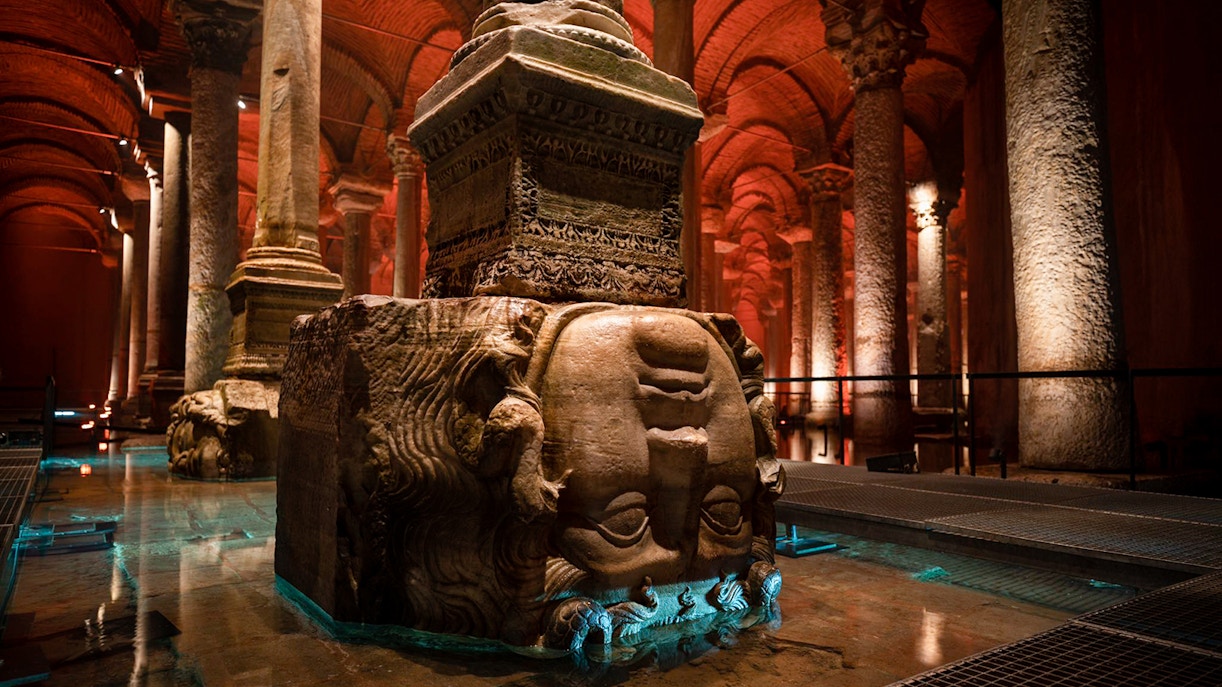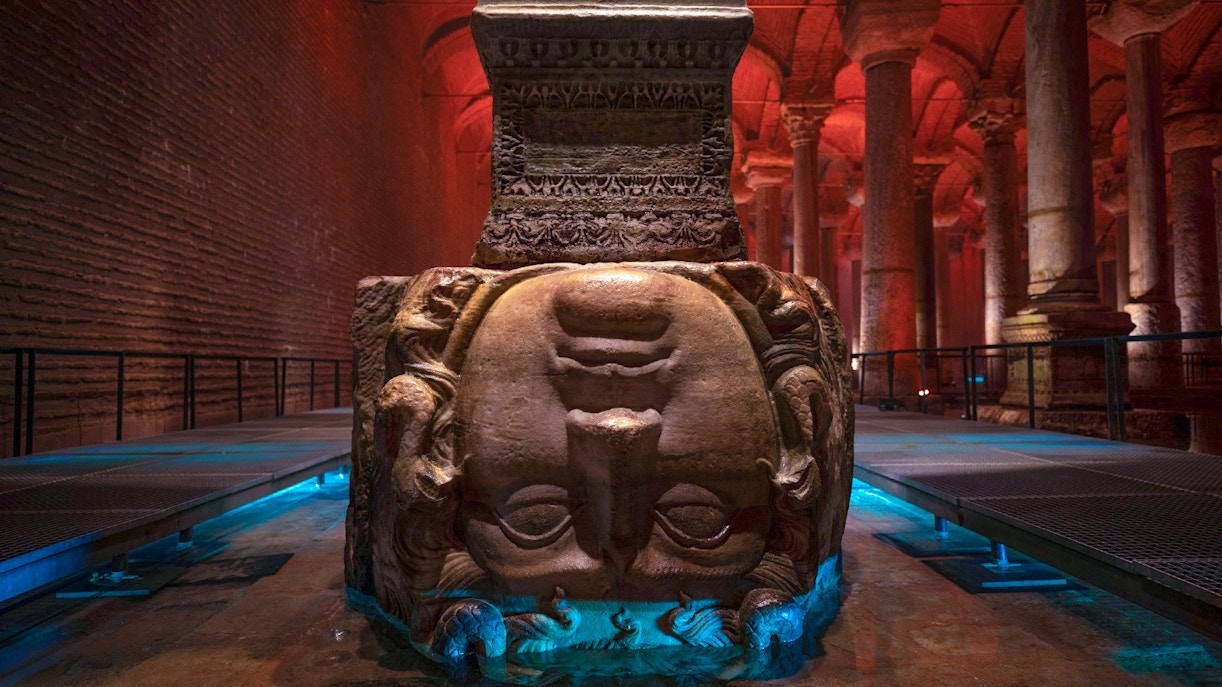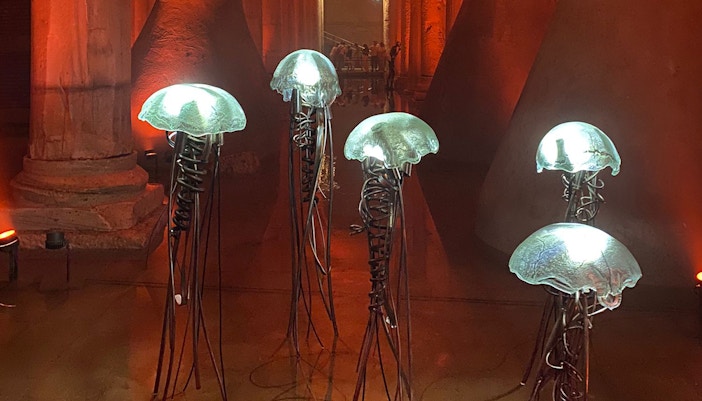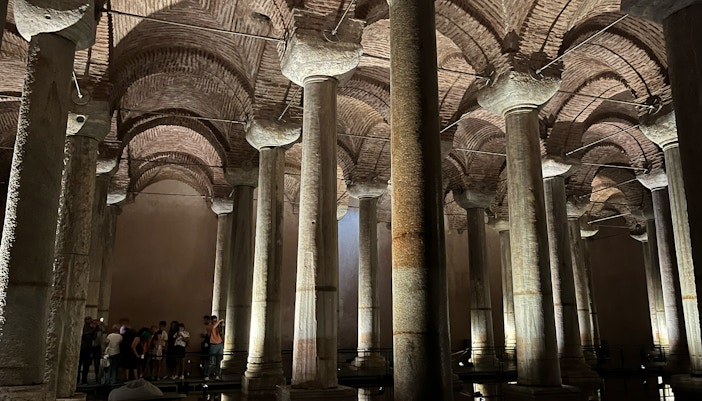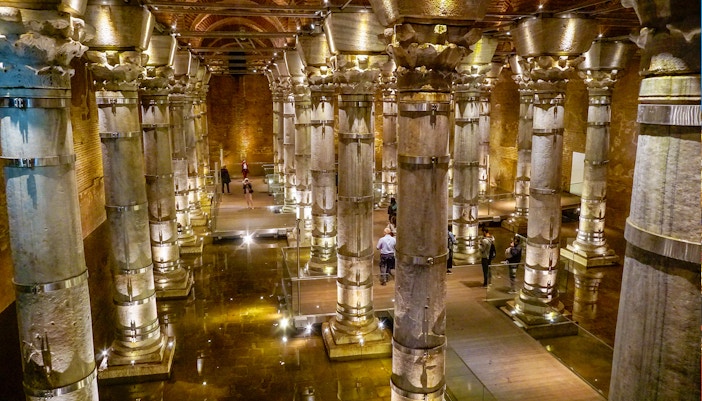Basilica Cistern has 336 columns supporting the water reserve. Two of these columns have Medusa's heads at their bases. One of the Gorgon monster’s heads is positioned sideways while the other is placed upside down. Here are a few reasons why these heads have become quite popular:
- Mystical charm: It is not known why the Medusa heads inside the Basilica Cistern are positioned upside down and sideways, however, their angles create an eerie atmosphere, which adds to the overall charm of the underground cistern.
- Ancient Greek relics: The Medusa heads are one of the few surviving examples of ancient Greek sculpture in Istanbul, and they are unlike anything else you will see in the city.
- Stunning visual experience: The dimly lit cistern with its rows of columns and reflections on the water creates a stunning visual experience that is truly unforgettable. The Medusa heads add to the beauty of this ancient site.

